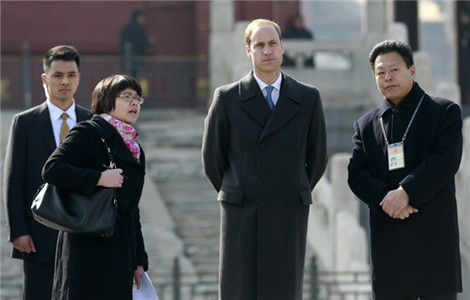Trade boost sought for China-LatAm 'new normal'
Updated: 2015-03-02 05:22
By Zhang Yuchen(China Daily Latin America)
|
||||||||
 |
|
Visitors enjoy a JAC "Refine S5" car painted into gloden color in San Paulo, Brazil, on Nov 6, 2014. Chinese brand cars such as Chery, Geely, BYD, JAC, Lifan are exhibited on the 28th San Paulo International Motor Show. Chinese-designed cars are very popular in Brazil. Xu Zijian / Xinhua |
Faced with new challenges, targets and continuing slow economic growth, China and Latin American will need more trade cooperation in a "new normal" relationship.
By the end of 2014, the volume of trade between China and Latin America totaled $264.03 billion, representing a growth of only 1.05 percent compared to the year 2013. During the same period, China's foreign trade volume with the rest of the world increased by 3.52 percent.
China's total annual exports to Latin America was $136.3 billion, an increase over the previous year of 1.52 percent; while its total annual imports from Latin America during the same period was $127.73 billion, an increase of only 0.55 percent.
Latin America once was the fastest growing region of foreign trade with China. From 2000 to 2012, trade between China and Latin America increased by nearly 20 times, and the proportion of China's total foreign trade rose from 2.7percent to 6.3 percent.
The trade volume with China in Latin American countries in proportion to the total size of the region's foreign trade grew from 1.7 percent in 2003 to 11.9 percent in 2013, making China the second largest trade partner of the region, chasing the US as the first trading partner of Latin American, followed by the EU in the third spot.
In the same period, China has established economic and trade ties with Brazil, Peru, Colombia, Cuba, Mexico, Venezuela, Uruguay, Chile and others.
But since 2010, China and Latin American countries have been witnessing their trade slightly slowing down. Till 2013, the Chinese customs statistics showed a clear slower growth of trade with Latin America of 7.2 percent, while China's foreign trade in total grew at 8.9 percent.
It was the first time since June 2003 that China and Latin America trade growth dropped behind the general foreign trade of the country. Since 2003, the bilateral trades with Latin American countries have for 10 years achieved an average annual growth of nearly 30 percent, much higher than the overall growth rate of China's foreign trade.
That type of slowdown in growth rate demonstrated a China-Latin American trade pattern in a way of "new normal".
From the trade flows, Latin American imports and exports showed a larger increased volatility and significant asymmetry. Monthly data showed that in 2014, Chinese imports from Latin America, within the previous 10 months remained relatively strong in growth, but after two months reproduced the decline; while Chinese exports to Latin America appeared in eight consecutive months of decline, until September, before resuming a growth again.
By the end of December, China's annual total exports to Latin America of $136.3 billion increased over the previous year by 1.52 percent; and total annual imports from Latin America of $127.73 billion, an increase of only 0.55 percent.
The new normal situation needs new strategy, suggested Yue Yunxia, researcher at the Institute of Latin American Studies, Chinese Academy of Social Sciences. In the short term, the two sides will face difficulties both inside and outside. On the external environment, China and Latin American economies have certain characteristics of extraversion, in the current context of global economic recovery process facing great uncertainty. The two sides are facing the difficulty to obtain sufficient external support.
On internal development, China's economic structure is constantly upgrading, being driven from the elements, investment-driven to innovation-driven economy has thus turned from the rapid growth in high-growth, GDP growth rate in the coming period is reduced to around 7 percent.
Yue's analysis in a report in the International Business Paper said that Latin America is also facing a difficult "re-industrialization" mission in the short term. The economic slowdown in Latin America is the root cause of the trade fall.
In the coming period of the transition adjustment, the downward growth rate may still exist. GDP growth will be lower than previous levels. Relatively weak macroeconomic equation, the effective purchasing power of both China and Latin America will be subject to certain inhibited growth of bilateral trade. The increasing volume space is limited.
In January 2015, China hosted the first ministerial forum of CELAC that resulted in the "China and Latin America and the Caribbean Cooperation Plan (2015 - 2019)", reiterating a goal of the trade volume between China and Latin America to reach $ 500 billion in the new phase.
The success of its implementation or not is highly related to the common welfare of China and Latin America. In order to resolve the conflict between vision and reality, it is necessary under the new conditions to use new strategies and tactics to adjust the layout for bilateral trade to seek a way out of the slow growth.
Through trade diversification, enrichment of Latin America trade, and to give full play to trade, investment and finance functions, the Latin America study expert said it is better to form large trade ideas and take advantage of the new platform to pull the overall cooperation to ensure the security conditions in the external pull-trade.
zhangyuchen@chinadaily.com.cn
- Legislative, advisory assemblies clean house
- Reserves expanded to protect panda's habitats
- Sport chiefs to press ahead with soccer reforms
- Visitors enjoy cherry blossom in a park in SW China's Yunnan
- Death toll rises to 9 in Shenzhen airport car accident
- Reporters receive accreditation for 'two sessions'

 Han-style Chinese beauties at Cambridge
Han-style Chinese beauties at Cambridge
 Prince William visits Forbidden City
Prince William visits Forbidden City
 Aerial views of plum blossoms as beautiful as oil paintings
Aerial views of plum blossoms as beautiful as oil paintings
 Visitors enjoy cherry blossom in a park in SW China's Yunnan
Visitors enjoy cherry blossom in a park in SW China's Yunnan
 Monkey king, angel and superwoman at Beijing's 'naked run' race
Monkey king, angel and superwoman at Beijing's 'naked run' race
 Red-crowned cranes in Yancheng
Red-crowned cranes in Yancheng
 Prince William evokes Diana memories on Japan tsunami trip
Prince William evokes Diana memories on Japan tsunami trip
 Best times to view spring flowers in Beijing
Best times to view spring flowers in Beijing
Most Viewed
Editor's Picks

|

|

|

|

|

|
Today's Top News
US policy focused on Asia: official
China more proactive at UN
Cooperation potential called 'limitless'
Homeland Security funding drama darkens US fiscal outlook
17th Apple retail store in Chinese mainland opens in Shenyang
PBOC cuts rates to ease business financing
Former celebrity TV anchor on crusade against pollution
China ends UN council presidency
US Weekly

|

|







